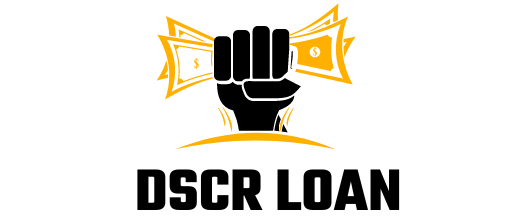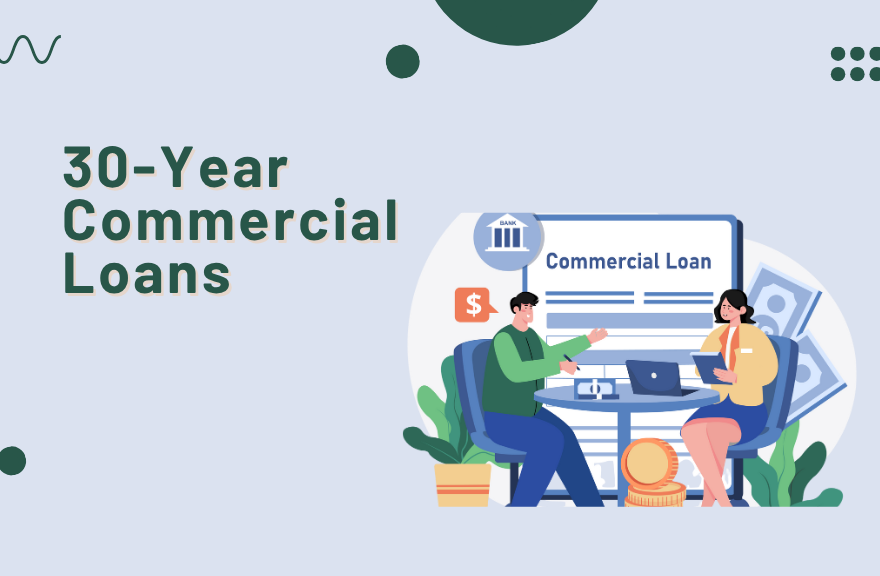Key Takeaways
- A 30 year commercial loan in the U.S. generally offers long-term financing for income-producing real estate or commercial enterprises, spreading payments over three decades for amortisation.
- Borrowers should focus on factors such as interest rate, amortisation schedule, loan-to-value (LTV), debt-service coverage ratio (DSCR), property class and sector (office, industrial, retail).
- Current U.S. commercial lending trends show improving originations but elevated risks for example delinquency rates in commercial real-estate increased in recent quarters.
- Securing a 30-year loan often requires strong credit, low leverage, stable cash flow, and property market fundamentals aligned with investor expectations.
- For long-term holdings, the 30-year term can offer certainty and amortisation, but also exposes borrowers to interest-rate risk, refinancing risk at maturity or change of ownership, and sector-specific headwinds.
Understanding the 30 Year Commercial Loan in the U.S.
What is a 30-year commercial loan?
A 30 year commercial loan in the U.S. means the borrower agrees to repay the loan over a 30-year amortisation schedule (or sometimes 25 or 30 years) rather than a shorter term. It is similar in concept to a 30-year residential mortgage but directed toward commercial or income producing property.
Key features:
- Full amortisation over 30 years (or near-full amortisation) so principal is gradually paid down.
- Fixed or floating interest rate, depending on lender and structure.
- Property acts as collateral.
- Suitable for long-term investment hold strategy.
- Often used for acquisition, refinancing, or long-hold repositioning.
Why choose a 30-year term?
- Lower monthly payments due to longer amortisation schedule.
- Certainty of cash flow: spreading payments over 30 years gives more room for property cash-flow to cover debt.
- Ideal for long-term ownership strategy: if the investor plans to hold the asset for many years, the 30-year term aligns well.
- Lock in financing: longer term reduces near-term refinancing risk (though other risks remain).
Risks associated with 30-year commercial loans
- While payments are lower, borrowers pay more interest in total over the life of the loan.
- The property may face changing market conditions over 30 years (tenant shifts, use changes, obsolescence).
- Interest-rate risk: if the loan has a floating rate or if refinancing is needed before the 30-year term ends.
- Sector risks (e.g., office real estate headwinds) may impact performance and ability to repay.
Key Terms & Metrics Borrowers Must Understand
Loan-to-Value (LTV) ratio
- This is the loan amount divided by the value of the collateral property.
- Lower LTV = less risk for the lender, often better terms for the borrower.
- Example: A property valued at US$10 million with a loan of US$6 million has an LTV of 60%.
Debt Service Coverage Ratio (DSCR)
- Measures the property’s annual net operating income (NOI) divided by the annual debt service (principal + interest).
- A DSCR of 1.25 means NOI is 25 % greater than required debt payments seen as a safe cushion.
- Lenders often require DSCR ≥ 1.20 to 1.30 for new commercial loans.
Interest Rate & Spread
- The interest rate might be fixed for the entire term or partially fixed then floating.
- Commercial loan spreads reflect risk: property type, borrower credit, amortisation, term.
- Recent data show spreads tightening in 2025 in the commercial lending market.
Amortisation & Term
- Amortisation schedule: how the principal is paid down over time.
- Term length: often 30 years (in our case) but sometimes shorter depending on lender and structure.
- Some loans may amortise over 30 years but have a shorter maturity (e.g., 10 or 15 years) requiring refinancing important to check.
Loan Maturity & Refinancing Risk
- Even if amortised over 30 years, the loan may mature earlier (balloon payment) requiring refinancing.
- If property value or market conditions deteriorate at maturity, refinancing can be challenging.
- In the U.S. commercial real estate sector, large volumes of debt mature in coming years a risk factor.
Current U.S. Commercial Lending Landscape
Macro trends influencing 30-year commercial loans
- According to the Mortgage Bankers Association (MBA), commercial/multifamily mortgage origination in Q2 2025 rose by 66 % year-over-year and 48 % from Q1.
- As per real-estate research, commercial real estate (CRE) lending activity improved in early 2025, with new debt volume up and more lenders re-entering the market.
- However, delinquencies and risks remain elevated: for example, over US$950 billion in CRE mortgages are maturing in 2025 alone in the U.S.
Implications for 30-year term borrowers
- While long-term financing is attractive, borrowers must be aware of the broader environment: higher interest rates, tighter underwriting, more scrutiny of property fundamentals.
- Markets with weaker fundamentals (e.g., some office buildings) pose higher risk for long-term loans.
- Lenders may demand lower LTV, higher DSCR, and stronger borrower track record for 30-year term loans.
Who Qualifies & What Lenders Look For
Typical borrower profile and property types
- Experienced sponsor: a borrower with a proven track record in commercial real estate or property management.
- Stable cash-flow asset: property with strong tenancy, good location, market demand (industrial, multifamily, logistics often preferred).
- Lower risk property class: many lenders remain cautious on office and some retail assets due to structural demand shifts.
- Strong financial metrics: low leverage, strong DSCR, conservative underwriting.
- Term alignment: holding strategy aligned with 30-year financing horizon.
What lenders evaluate for 30-year loans
- Property analysis: location, asset class, age, condition, tenant mix, lease term.
- Market fundamentals: vacancy rates, rent trends, supply/demand.
- Borrower strength: creditworthiness, past performance, net worth/liquidity.
- Exit strategy: how will the borrower repay/exit at maturity? For a 30-year term, the payoff mechanism may be built-in amortisation or sale event.
- Interest-rate and refinancing strategy: even with 30-year amortisation, some loans may have shorter maturities or call features so refinance risk remains.
How to Structure a 30 Year Commercial Loan
Loan structure considerations
- Fixed vs Floating Rate: Fixed rate gives predictability but often at a higher cost; floating may be cheaper initially but carries risk.
- Full vs Partial Amortisation: Full amortisation over 30 years means no balloon payment; partial amortisation may require large payment or refinance.
- Prepayment terms: Some loans include prepayment penalties or yield maintenance — important for flexibility.
- Lock-in vs Call Options: Does the loan allow early repayment or refinance? Are there fees?
- Security and covenants: Lenders may impose covenants on cash flow, reserves, and property operations.
Sample amortisation scenario
- Suppose a borrower obtains a US$5 million 30-year loan at 5.5 % fixed interest amortising fully over 30 years.
- Monthly payment ≈ US$28,400 (approximate).
- Over 30 years, the borrower will pay significant interest (over US$5 million) in addition to principal.
- However, because amortisation is long, monthly burden is lower, easing cash-flow requirements.
Negotiating Terms & Tips for Borrowers
Pre-application preparation
- Compile strong financials: property income/expense history, tenant leases, occupancy, market comparables.
- Demonstrate experience and viability of long-term hold strategy.
- Prepare to answer: “What is your exit strategy after 30 years or earlier?”
Key negotiation points
- Interest rate: Shop among traditional banks, life-insurance companies, debt funds.
- Amortisation schedule: Prefer full pay-down rather than balloon at the end.
- Prepayment flexibility: If you plan to sell or refinance early, ensure loan allows that without punitive cost.
- Term matching: Ensure the loan maturity aligns with your business plan preferably full 30-year maturity not just amortisation.
- Reserves & covenants: Negotiate reasonable requirements e.g., capital reserves, waterfall structures.
- Flexibility for property repositioning: If market conditions change (tenant shift, use change) you want the financing structure to permit flexibility.
Ongoing management
- Maintain property performance: keep occupancy high, tenant quality strong.
- Monitor interest-rate environment and refinancing options: Even with 30-year amortisation, if you need to refinance or sell early, you should plan ahead.
- Maintain adequate reserves: for capital expenditures, tenant turnover, vacancy.
- Build communication with lenders: Lenders like disciplined borrowers; early warning helps avoid surprises.
Conclusion
A 30 year commercial loan in the U.S. can be a powerful tool for investors who adopt a long-term ownership mindset, prioritise stable cash-flow, and choose property types with durable fundamentals. It offers lower monthly burden and amortisation advantages but also carries long-term risks interest-rate changes, sector shifts, property obsolescence, and refinancing risk.
FAQs
What is the difference between a 30-year commercial loan and a 10- or 20-year loan?
Shorter terms mean higher payments but less total interest. A 30-year loan offers lower monthly payments and suits long-term holders, while shorter terms fit quick sales or refinancing plans.
Can all property types qualify for 30-year commercial loans?
Not all do. Lenders favor stable, income-producing assets like multifamily or strong retail properties, while weaker markets or aging assets may face stricter terms.
What happens at the end of 30 years?
If fully amortized, you own the property outright. If there’s a shorter maturity, a balloon payment or refinancing is required. Always check both terms and amortization.
How do interest rates affect long-term commercial loans?
Higher rates raise monthly payments and total interest. Long-term loans also face rate and market cycle risks over time.
Is it better to pay off the loan early?
Early payoff saves interest but may trigger prepayment penalties. Always review loan terms before making extra payments or refinancing.

Introducing Emily Parker, a seasoned professional with over 5 years of expertise in DSCR loans. With her extensive knowledge and experience in the field, Varsha has consistently demonstrated a deep understanding of DSCR loan intricacies and a proven track record of delivering successful outcomes for her clients.

